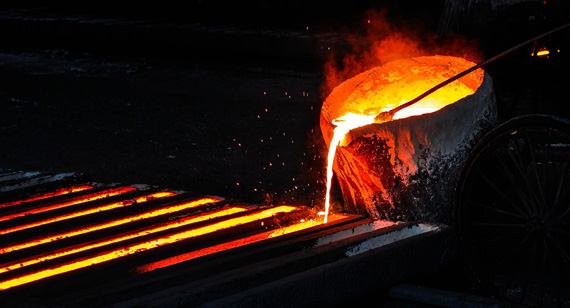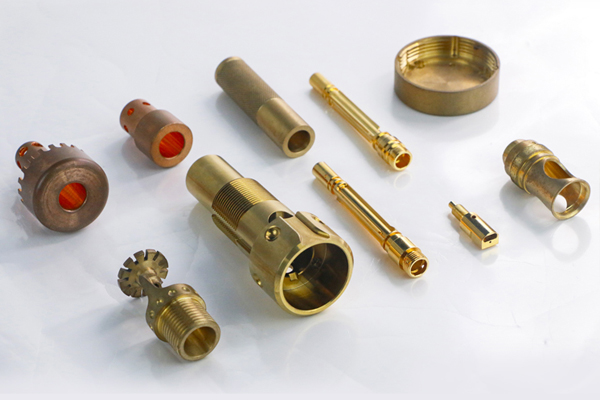15 years one-stop China custom CNC machining parts factory

Hey there I’m VMT Sam!
With 25 years of CNC machining experience we are committed to helping clients overcome 10000 complex part-processing challenges all to contribute to a better life through intelligent manufacturing. Contact us now
 573 |
Published by VMT at Jul 04 2024
573 |
Published by VMT at Jul 04 2024
Melting Point of Brass: In-Depth Exploration and Understanding
In the field of CNC machined parts manufacturing, brass is a highly favored metal material due to its excellent machinability, corrosion resistance, and aesthetic appearance. Understanding the melting point of brass is fundamental to mastering its machining characteristics, optimizing production processes, and expanding its application areas. This article will start with the melting point of brass, comprehensively analyzing its various forms, melting point range, influencing factors, and performance in high-temperature applications. It will also introduce the characteristics, applications, and specific melting points of several common brass alloys and address frequently asked questions.
Melting Point of Brass
Understanding Melting Point
The melting point, the fixed temperature at which a substance transitions from a solid to a liquid state, is a fundamental concept in materials science. For metallic materials, the melting point is directly related to machining difficulty, operating temperature range, and thermal stability. As an alloy of copper and zinc, the melting point of brass varies depending on its composition.

Different Forms of Brass
Brass can exist in various forms, including sheets, bars, tubes, and wires, depending on specific application needs. Regardless of the form, the basic physical and chemical properties of brass, including its melting point, are influenced by its alloy composition and microstructure.
What is the Melting Point Range of Brass?
The melting point of brass is not a fixed value but varies with the zinc content and other alloying elements. Generally, the melting point of pure copper is about 1083°C, while brass, due to the addition of zinc, has a lower melting point. Common brass alloys typically have melting points ranging from 800°C to 950°C.
At What Temperature Does Brass Melt?
Brass begins to melt upon reaching its melting point, though the actual melting process may occur over a range rather than a precise point. This is because the melting behavior of brass alloys is influenced by various factors such as alloy composition, impurity levels, heating rate, and environmental conditions.
Why is Determining the Melting Point of Brass Important?
Determining the melting point of brass is crucial for CNC machined parts manufacturing. It helps engineers and operators select the appropriate machining temperature, ensuring the process is neither too cold, which could make machining difficult, nor too hot, which could damage tools or alter material properties. Additionally, understanding the melting point aids in optimizing heat treatment processes, such as annealing and quenching, to enhance the mechanical and machining properties of brass. For brass parts that need to operate in high-temperature environments, knowing the melting point helps evaluate safety and durability.
Factors Affecting the Melting Point of Brass
The melting point of brass is influenced by various factors, mainly including:
Alloy Composition: Zinc content significantly affects the melting point of brass—the higher the zinc content, the lower the melting point. The addition of other alloying elements also influences the melting point.
Impurity Levels: Impurities such as oxygen, sulfur, and lead lower the melting point and may affect machining and mechanical properties.
Microstructure: The grain size and phase distribution of brass affect its melting point.
Heating Rate: Different heating rates can lead to varying melting behaviors.
Melting Points of Different Types of Brass
Characteristics, Applications, and Melting Point of H96
H96 contains up to 96% copper and has excellent electrical and thermal conductivity, often used in electrical connectors and radiators. Its melting point is close to that of pure copper, around 1050°C to 1070°C.
Characteristics, Applications, and Melting Point of H80
H80 brass, with about 80% copper content, features good machinability and corrosion resistance, widely used in pipelines, valves, and hardware. Its melting point ranges from 870°C to 900°C.
Characteristics, Applications, and Melting Points of H85 and H90
H85 and H90 brass, with 85% and 90% copper content respectively, have melting points between H80 and H96, depending on their specific alloy compositions. These alloys are extensively used in decorative, architectural hardware, and precision instrument manufacturing.
Characteristics, Applications, and Melting Points of HA177-2, HMn58-2, HPb59-1, and HSn62-1
HA177-2: A high-strength brass containing aluminum and other elements, used in high-strength and corrosion-resistant applications, with its melting point adjusted according to its specific composition.
HMn58-2: High-manganese brass with good wear and corrosion resistance, commonly used in wear-resistant parts, with a melting point of about 850°C to 900°C.
HPb59-1: Lead brass known for excellent machinability and weldability, widely used in valves and pipe fittings, with a melting point of about 830°C to 870°C.
HSn62-1: Tin brass with excellent corrosion resistance, particularly suitable for marine environments, with a melting point of about 820°C to 860°C.
| Material | Melting Point | Characteristics | Applications |
| H96 | 1050°C to 1070°C | Excellent electrical and thermal conductivity, etc. | Electrical connectors, radiators and other parts |
| H80 | 870°C to 900°C | Good machinability and corrosion resistance, etc. | Pipes, valves, hardware and other fields |
| H85 | 1400°C to 1450°C | Wear resistance, toughness or machinability, etc. | Bearings, gears, pump parts, etc. |
| H90 | 1400°C to 1450°C | Wear resistance, toughness or machinability, etc. | Bearings, gears, pump parts, etc. |
| HA177-2 | 900°C to 1000°C | High strength and corrosion resistance, etc. | Condenser tube manufacturing and corrosion-resistant parts on ships, etc. |
| HMn58-2 | 850°C to 900°C | Good wear resistance and corrosion resistance, etc. | Electronic devices (such as sockets, connectors), sheet metal processing (parts, shells) and ship and marine engineering (hull structure, pipelines) |
| HPb59-1 | 830°C to 870°C | Good machinability and weldability, etc. | Manufacturing valves, pipe fittings, screws, washers, gaskets, bushings, nuts, nozzles, etc. |
| HSn62-1 | 820°C to 860°C | Excellent corrosion resistance, mechanical properties, cold brittleness, good machinability, easy welding and brazing, etc. | Manufacturing parts that come into contact with seawater, gasoline, etc., also known as naval brass etc. |
Performance of Brass in High-Temperature Applications
Brass may undergo oxidation, softening, and other changes at high temperatures, affecting its mechanical properties and dimensional stability. Therefore, for high-temperature applications, it is essential to select brass alloys with higher heat resistance or apply appropriate protective measures to extend their service life. For brass parts required to operate in high-temperature environments, such as steam pipes and heat exchangers, engineers need to consider factors like melting point, thermal expansion coefficient, and oxidation resistance to ensure safety and reliability.
Heating and Melting of Brass in Manufacturing
In CNC machined parts manufacturing, heating and melting of brass are essential processes, typically achieved through methods such as resistance furnace, induction heating, or gas combustion heating. Precise temperature control is crucial during heating to avoid overheating, which can degrade performance, or incomplete melting. The molten brass is then poured into molds to solidify into the desired part shapes. Understanding the exact melting point of brass helps optimize heating parameters, improve production efficiency, and ensure product quality.
Conclusion
Brass, as a crucial material for CNC machined parts, has a melting point that is key to determining its machinability, operating temperature range, and thermal stability. By thoroughly understanding the melting point of brass and its influencing factors, we can better select and use brass alloys, optimize machining processes, and enhance product quality. Additionally, detailed knowledge of the characteristics, applications, and melting points of different types of brass alloys provides valuable support in practical engineering applications.

FAQs
Is Brass Difficult to Melt?
The ease of melting brass depends on its alloy composition and heating conditions. Generally, brass has a relatively low melting point and is easier to melt compared to some high-melting-point metals like tungsten or rhenium. However, precise temperature control and melting processes are required in CNC machining to ensure accurate shaping and high quality of brass parts.
Does Aluminum Melt Faster Than Brass?
Aluminum has a much lower melting point than brass, around 660°C, so it melts faster under the same conditions. However, when choosing materials for CNC machined parts, factors like strength, corrosion resistance, and machinability are also important considerations.
What is the Easiest Metal to Melt?
From a melting point perspective, mercury has the lowest melting point among known metals, around -38.83°C, making it liquid at room temperature. However, mercury is not commonly used as a structural material. Among more commonly used metals, gallium (melting point ~29.76°C) and cesium (melting point ~28.4°C) have low melting points but are less frequently used in CNC machined parts manufacturing due to their unique properties.
What is the Most Difficult Metal to Melt?
The metal with the highest known melting point is tungsten, at 3410°C. Tungsten's high melting point, strength, and corrosion resistance make it widely used in high-temperature applications such as light bulb filaments, cutting tools, and high-temperature furnaces. However, due to its high melting point and difficulty in machining, tungsten is less commonly used in CNC machined parts manufacturing.
In summary, the melting point of brass is a critical property in CNC machined parts manufacturing. By deeply understanding its melting point and applications, we can better grasp the machining characteristics and conditions for using brass, ensuring high-quality production of CNC machined parts.
Ready To Start Your Next Project?
Get Instant Quote

Request a Free Quote
Send us a message if you have any questions or request a quote. We will get back to you ASAP!